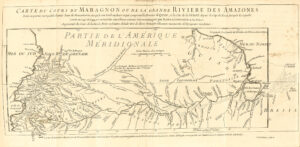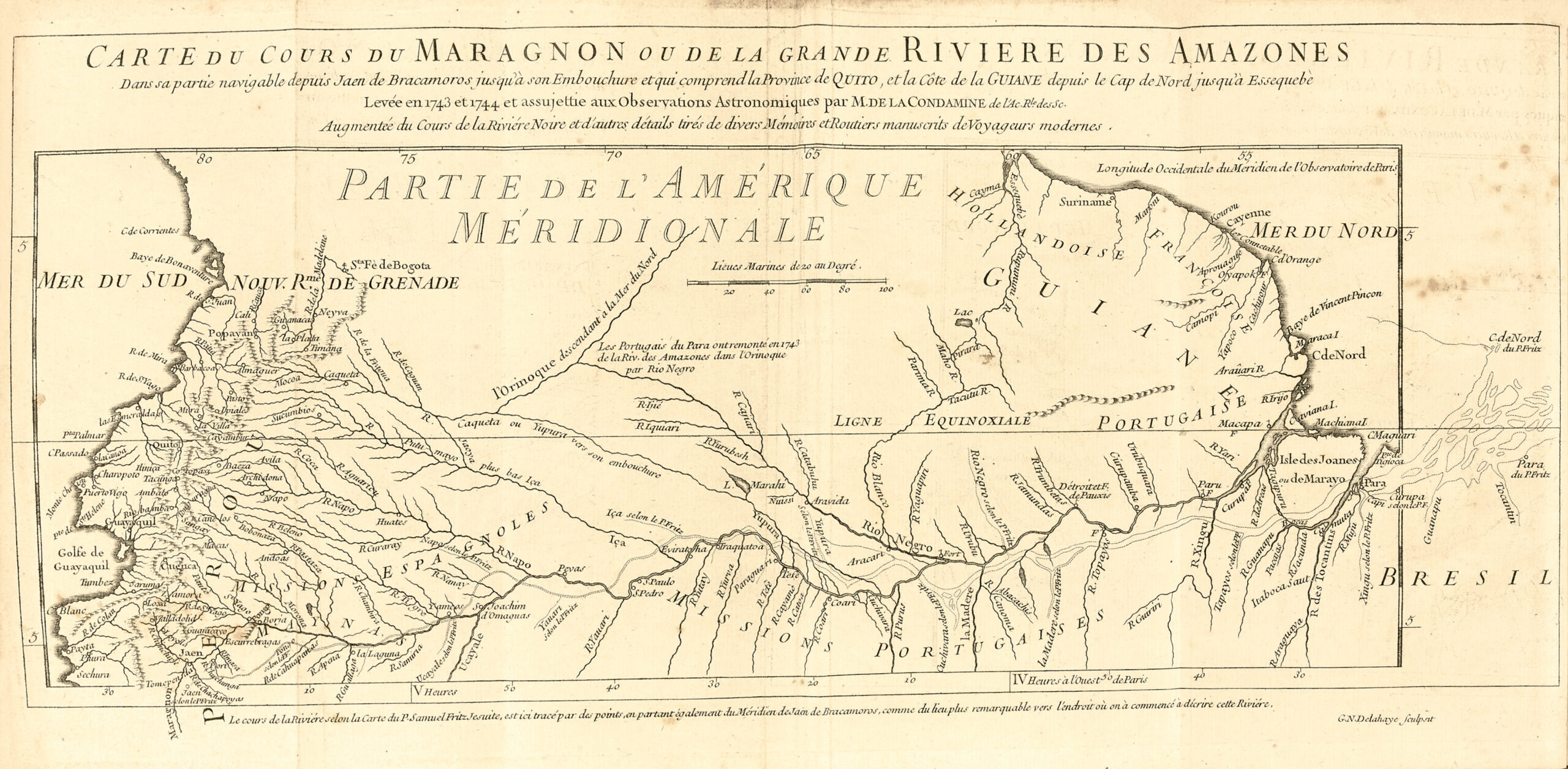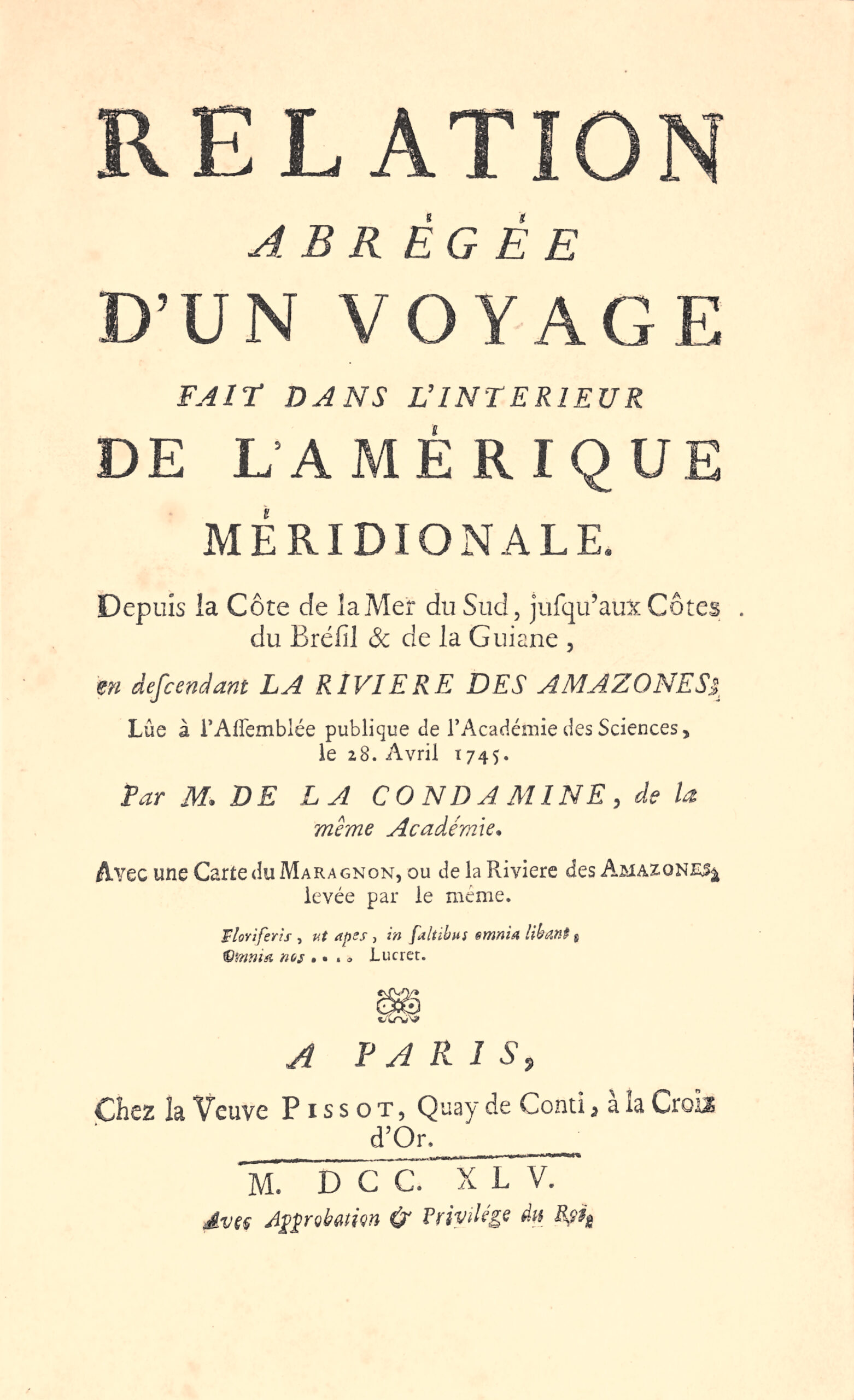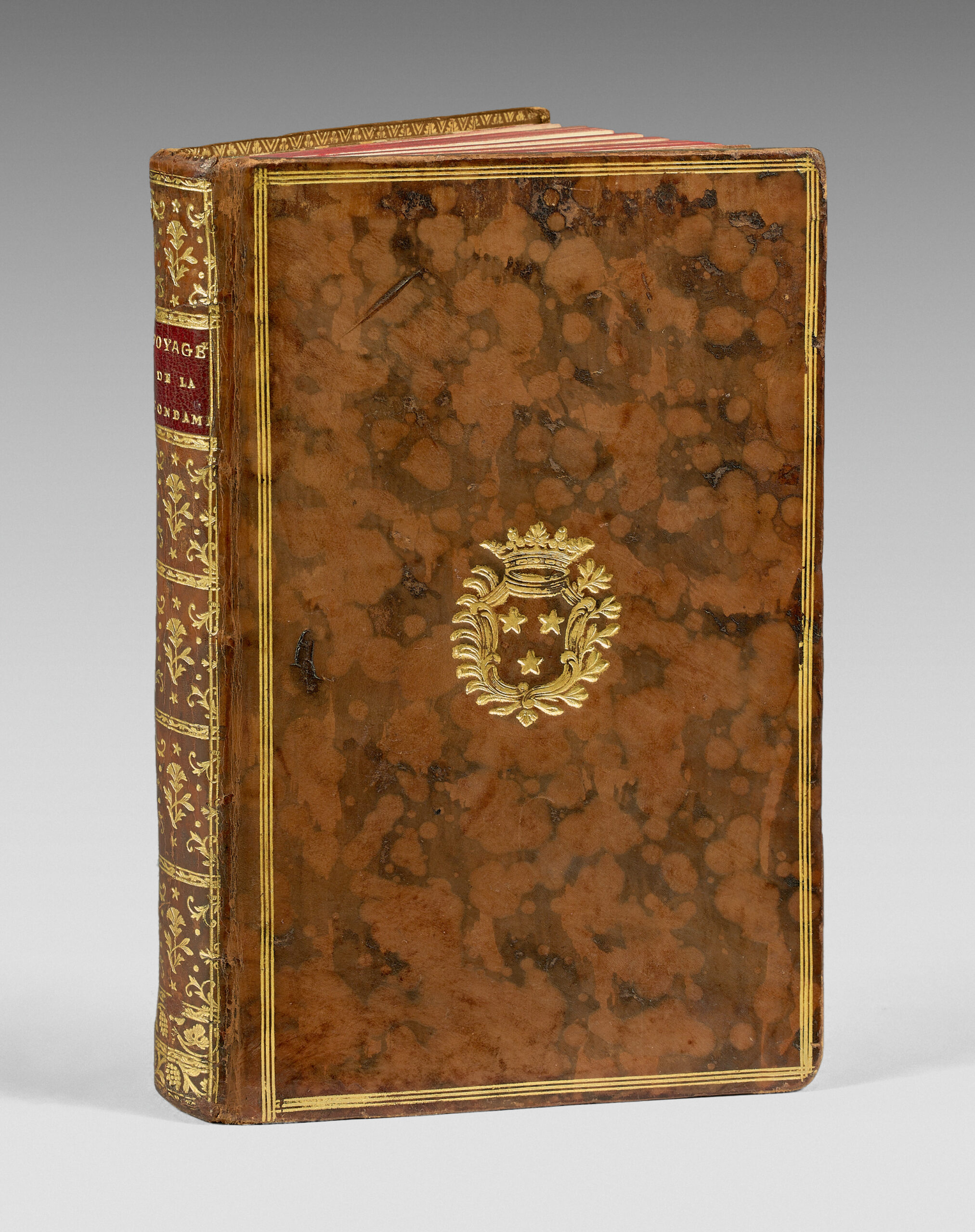Paris, chez la Veuve Pissot, 1745.
8vo of (2) ll., xvi pp., 216 pp., (2) ll. of privilege, 1 folding map., some ll. browned. Marbled calf, decorated flat spine, triple gilt fillet around the covers with gilt coat-of-arms in the center, gilt inner border. Contemporary binding.
190 x 120 mm.
Original edition of this “very interesting account” (Chadenat), of the first scientific descent of the Amazon.
Brunet, III, 729; Chadenat, I, 2665; Leclerc, Bibliotheca Americana, 1768; Pritzel 1848; Double, Cabinet d’un curieux, 30; Sabin 38484; Rahir, La Bibliothèque de l’amateur, 483; Palau 129370; Borba de Moraes, I, 446.
“Highly valued work.” Chadenat.
“This report contains valuable information on several parts of an immense region that was known to us only through the writings of the missionaries. To this information, La Condamine has added some very judicious observations on the natives”. Leclerc.
“Charles-Marie de La Condamine (1701-1774) was a French traveler and mathematician […] He undertook various voyages, and after having travelled along the Mediterranên and the coasts of Africa and Asia, he found on his return that the Academy was concerned with a project to determine the length of the meridian in Ecuador. He offered to be part of it, and was accepted… So, in 1736, he left for Peru with Godin and Bouguer. Not only did he observe the bulge of the Earth at the equator relative to the poles, but he also noticed that mountains attract serious bodies to themselves and cause them to deviate from the vertical [principle of the general attraction of the masses] […]. La Condamine almost perished there, as a result of the imprudence of one of his companions named Seniergues. This young man’s libertinism and haughty tone angered the citizens of New Cuenca, who rose up against the travelers; but the only guilty party was the victim. La Condamine went down the Amazon river, and travelled more than five hundred lêgues on it, escaping dêth twenty times. […] La Condamine was one of the first members of the Academy of Sciences to be admitted to the French Academy, where he was received by Buffon in 1760. (M. le Dr. Hoeffer, Nouvelle biographie générale, XXVII, 544).
This report provides the first precise botanical information on cinchona. The voyage also led to the discovery of rubber and curare, a poison used by the Amerindians to make arrows. La Condamine returned to Paris in February 1745 with over two hundred natural history objects, which he presented to Buffon.
Once the scientific expedition was over, La Condamine decided to cross Brazil down the Amazon River before returning to Europe. The present work is in fact the account of the first scientific exploration of this river.
The author describes the work in these terms: “This is an abridged account of my voyage down the Amazon River, which I descended from the point where it begins to be navigable to its mouth, and which I travelled over a thousand lêgues […]”.
The aim of this expedition to the Equator, led by La Condamine, Godin and Bouguer, was to mêsure one degree of latitude in the equatorial regions of Peru in order to determine the exact size and shape of the êrth.
This historic mêsurement, which took almost a decade to complete, proved Newton’s theory that the Earth is not spherical but squashed at the poles. On the way back, the expedition lêders chose to take separate routes to flesh out their reports. La Condamine chose the dangerous route of crossing Brazil by the Amazon.
The small expedition rêched the Brazilian fort of Para on 6 September 1743. From there, La Condamine travelled to Cayenne before embarking for France. He made some astronomical observations in Cayenne and returned to France in 1744. In addition to his work on the expedition, La Condamine published a report on his voyage down the Amazon, various writings and a memoir describing the properties of rubber for the first time (1751).
He brought back rubber and the first description of the cinchona tree.
La Condamine’s account was “of grêt importance, because for the first time the long course of the Amazon was traversed by a man of science capable of making astronomic observations, and determining longitudes“. (Borba de Moraes).
The work is illustrated with a fold-out map entitled “Carte du cours du Maragnon ou de la grande rivière des Amazones”, drawn by the author and engraved by G.N. Delahaye.
This map is the first to respect latitudes and the first to retrace the course of the Araguay.
A very fine copy bound at the time with the arms of Charles-Claude Andrault, marquis of Langeron and of Maulevrier, count of Chabrieres (1720-1791).
He was successively brigadier in 1748, governor of Briançon in 1754, governor of Brest in 1755, second in command of the province of Brittany, marshal of camp in 1758 and lieutenant general in 1762. He was also Knight of the Order of the Holy Spirit from 1784 until his dêth (O.H.R. pl. n°1508, iron n°1).




